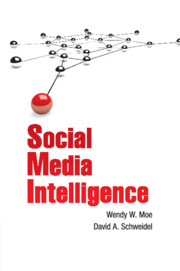6 - Are Social Media Fragmenting the Population?
from Part III - Conversational Trends
Published online by Cambridge University Press: 05 February 2014
Summary
In his book Crossing the Chasm, Geoffrey Moore argues that for a product to succeed in the mass market, it must cross the chasm that separates the innovative consumers from the rest of the market, the previously discussed imitators. But simply getting the approval of the innovators is not enough to penetrate the mass market. Instead, a few influential individuals among the innovator population can play a critical role in bridging the gap between the innovator population and the mass market.
Is this the only path toward success for a new product? In a study of how information is transmitted across a social network, Watts and Dodd demonstrate that it is not always the influential power of a few that leads to the diffusion of information. An alternative path for diffusion of information exists if there is “a critical mass of easily influenced individuals” who can fuel the viral takeoff of an product, idea, or opinion.
- Type
- Chapter
- Information
- Social Media Intelligence , pp. 89 - 106Publisher: Cambridge University PressPrint publication year: 2014



